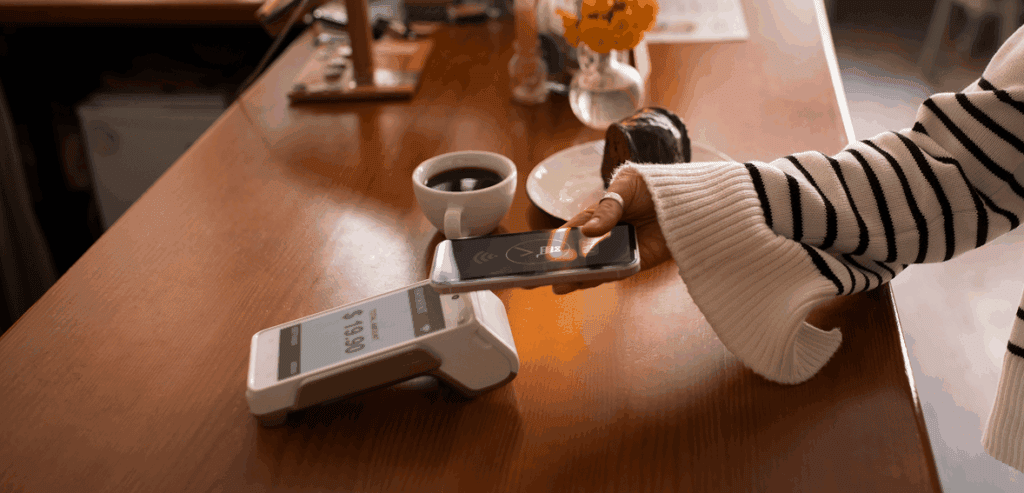
By Geraldine Burns November 10, 2025
In the restaurant world, speed and convenience shape every guest experience. From the moment diners are seated to when they pay, every second influences satisfaction and revenue. Behind this flow sits the restaurant point of sale, quietly orchestrating transactions across cards, wallets, and QR payments. Each tender type affects not only guest experience but also throughput, transaction fees, and operational cost. Choosing the right payment mix isn’t just about keeping up with trends—it’s about balancing efficiency with profitability.
Today’s restaurant POS systems do more than process payments. They analyze patterns, automate reconciliation, and ensure that each payment method aligns with your business model. Whether it’s a contactless card tap, a digital wallet transaction, or a QR code scan, the right POS for restaurants determines how fast tables turn and how much it costs to get paid. Understanding these nuances helps operators match technology to throughput, and throughput to revenue.
The Enduring Power of Card Payments

Despite the rise of mobile and QR-based options, card payments remain the workhorse of restaurant transactions. Guests trust their credit and debit cards for both dine-in and takeaway orders. For restaurants, the benefit lies in consistency—card transactions are universally accepted, quick to authorize, and integrated seamlessly within the restaurant point of sale.
However, card acceptance isn’t free. Transaction fees vary based on card type, processor, and volume. While EMV chip payments offer security, they also slow down high-volume service environments. That’s why tap-to-pay and contactless cards are increasingly preferred, combining speed with compliance. Integrated restaurant payments simplify this further by embedding payment processing directly within the POS interface, eliminating the need for separate terminals.
When throughput peaks—lunch rushes or weekend dinners—a unified point of sale ensures every card swipe or tap flows instantly into the accounting system. The result is fast settlement, accurate reporting, and minimal friction between guests and servers.
Wallets: The Middle Ground of Convenience
Digital wallets like Apple Pay, Google Pay, and Samsung Pay have gained strong traction among diners who value speed and security. For restaurants, wallet transactions offer near-instant processing through NFC technology, reducing checkout time significantly. Guests can complete payments with a tap or facial authentication, and servers no longer handle physical cards.
The restaurant POS system plays a critical role here, enabling contactless terminals and ensuring compatibility with various wallet providers. Beyond convenience, wallets also reduce chargeback risks due to tokenization and multi-layer authentication. Yet, fees can be slightly higher than traditional cards, depending on the processor. For many operators, this trade-off is worth the improved speed and enhanced guest experience.
By integrating wallet acceptance directly into the POS for restaurants, managers can track payment trends and customer preferences. When combined with loyalty and marketing tools, wallet data can reveal valuable insights—like which customers use mobile payments most frequently or which locations see higher wallet adoption. Such analytics allow restaurants to tailor payment experiences to their audience, optimizing throughput without inflating costs.
QR Payments and Their Growing Role

QR code payments have transformed how restaurants manage self-service, takeout, and contactless ordering. Whether scanned from a table tent or a printed receipt, QR codes link guests directly to secure payment pages connected to the restaurant point of sale. This approach is especially effective in casual and quick-service environments where staff mobility is limited.
The benefit is immediacy. Guests scan, pay, and leave without waiting for a server to return with a terminal. For restaurants, this reduces congestion at checkout points and frees up staff to serve more tables. The online ordering POS further extends this capability to remote transactions—connecting dine-in, delivery, and takeout orders within one system.
While QR payments eliminate the need for physical contact and speed up service, they do require stable connectivity and clear integration with the POS. Fees are typically comparable to standard card payments, but the reduced labor time offsets the cost. A well-implemented restaurant POS system like Bread’s links QR transactions directly to the order record, ensuring accuracy and instant reconciliation once payment is received.
Throughput: The Hidden Metric of Payment Success
Speed isn’t just about convenience—it’s about maximizing revenue per minute. When multiple guests wait to pay, every delay affects table turnover and the number of transactions per hour. The restaurant point of sale determines how efficiently payments are handled across card, wallet, and QR methods.
Card and wallet payments usually deliver the fastest authorization times when integrated with the POS. QR transactions, though sometimes dependent on guest interaction speed, reduce staff workload. The key is ensuring all tender types connect to the same restaurant POS system, so data flows smoothly into reports and analytics. A disjointed setup with separate payment tools can create reconciliation issues and slow nightly closeouts.
By analyzing transaction duration data, the POS for restaurants can reveal which methods drive the best throughput during peak hours. Managers can then adjust payment options or terminal placements to streamline checkout. The right combination ensures guests pay how they prefer—without slowing service.
Cost Structures: Beyond the Swipe Fee
Every payment method carries hidden costs beyond visible transaction fees. Credit cards may attract interchange and network fees; wallets could include provider-specific surcharges; and QR-based platforms often charge processing or gateway fees. A comprehensive restaurant point of sale helps operators see these differences clearly through built-in reporting tools.
By linking payments to performance, managers can calculate the real cost per transaction relative to order size and type. For example, a coffee shop handling hundreds of low-ticket transactions might prioritize wallet and QR payments for faster service, while a fine-dining venue could focus on traditional card terminals with lower interchange rates. The goal is not just speed—it’s achieving the optimal balance between convenience and cost.
Integrated restaurant payments simplify this balancing act by consolidating fees and providing unified statements. Instead of managing multiple providers, the restaurant deals with one platform that offers both transparency and predictability. Over time, these savings contribute significantly to margins, especially in high-volume operations.
Integration as the Equalizer
What truly ties all payment options together is seamless integration. When cards, wallets, and QR payments all run through one restaurant POS system, the experience becomes frictionless for both guests and staff. Every transaction is logged, reconciled, and analyzed automatically, minimizing manual work and reducing errors.
An integrated point of sale ensures that no matter how the guest pays, the process feels the same—quick, secure, and professional. Staff don’t have to switch devices or systems, and managers gain unified oversight of every payment channel. This consistency not only improves throughput but also strengthens data integrity for reporting and compliance.
For restaurants expanding into delivery or catering, integration with online ordering POS ensures that remote and in-store payments are managed in one environment. This cross-channel harmony supports scalability and operational clarity as business grows.
Guest Experience and Perceived Value
Payment isn’t just a functional step—it’s the guest’s final impression of your restaurant. A slow or confusing checkout can overshadow an otherwise great meal. That’s why speed, choice, and transparency matter. With the right restaurant POS system, every payment interaction becomes effortless. Guests can choose their preferred tender type, view receipts instantly, and leave feeling that the experience was both modern and secure.
For staff, this efficiency translates into confidence and focus. They spend less time managing terminals and more time engaging customers. When the POS for restaurants automates payment workflows, it eliminates uncertainty and reduces errors, ensuring that every transaction closes cleanly and accurately.
The harmony between guest convenience and operational precision defines modern hospitality. A flexible restaurant point of sale like Bread’s achieves that harmony by giving restaurants full control over how payments happen—whether it’s a tap, scan, or swipe.
Strategic Payment Mix for Long-Term Growth
Restaurants that analyze tender types through data-driven insights tend to find the sweet spot between cost and efficiency. Tracking payment distribution over time reveals customer behavior trends, helping tailor future offerings. For example, if wallet usage grows among younger diners, investing in NFC infrastructure pays off. If QR payments dominate during peak lunch hours, adding visible table codes enhances convenience.
The modern restaurant POS system transforms these insights into action. Managers can adjust terminal configurations, optimize staff workflows, or negotiate better processing rates using real transaction data. Over time, this level of precision shapes a payment ecosystem that maximizes both guest satisfaction and profitability.
Ultimately, the right tender mix isn’t about picking one winner—it’s about matching payment methods to your service model. A data-aware point of sale ensures that each transaction type serves a purpose: speed, savings, or satisfaction. When aligned with throughput goals, it becomes a silent driver of revenue growth.
The Future of Restaurant Payments

As technology evolves, payment preferences will keep shifting. New wallets, BNPL options, and dynamic QR codes are already emerging. Restaurants that invest in flexible, cloud-based POS for restaurants will adapt fastest. Future-ready systems like Bread’s integrate every form of payment while maintaining PCI compliance, security, and real-time reporting.
This adaptability ensures that whether a guest taps a card, scans a QR, or pays via digital wallet, the experience remains seamless. At the same time, operators retain full visibility into processing costs, performance data, and payment health.
The modern restaurant point of sale is no longer a static tool—it’s an active engine for operational efficiency and financial optimization. Matching tender to throughput isn’t just about keeping up with customer habits; it’s about building a restaurant that runs faster, smarter, and more profitably—no matter how guests choose to pay.